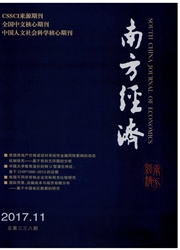

 中文摘要:
中文摘要:
作为全球第一大碳排放国和第二大经济体,我国正承受着越来越大的碳减排压力。在世界各国都参与应对气候变化的进程中,我国的最优碳减排幅度是怎样的呢?本文在Nordhaus的RICE-2010模型基础上,通过将化石能源的消耗内生于经济系统模块,改良出RICE-E模型。数值计算表明,从2005至2095年,我国需实现完全碳减排,相应的碳税水平从每吨碳排放68.7元(2010年价)提高到接近2000元。这个力度在世界各大国中并不是最激进的,位处俄罗斯和美国之后,与欧盟、拉美为同一档次,但强于日本和印度。在此碳减排进程下,我国碳排放量由升转降的时间拐点出现在2055年左右。
 英文摘要:
英文摘要:
As the biggest carbonemitter and the second largest economy, China is experiencinghigher and higher pressures for the mitigation of carbon emissions. In the process of the whole worldreacting together to climate change, what's our mitigation level? Basing on Nordhaus's RICE -2010model, this paper constructs a RICE - E model with a new characteristic of endogenizing the supply offossil fuels in the economic module. Numerical computations indicate that from 2005, China shallachieve full mitigation by 2095, and the corresponding carbon tax increases from 68.7 yuan per toncarbon to near 2000 yuan. Such an effort level is not the most radical among the world's majorpowers. The mitigation pressure of China is lower than that of Russia and USA, at the same level withthat of EU and Latin America, but higher than that of Japan and India. Moreover, the EKC pointwhere carbon emissions turn from increasing to decreasing is in 2055.
 同期刊论文项目
同期刊论文项目
 同项目期刊论文
同项目期刊论文
 期刊信息
期刊信息
